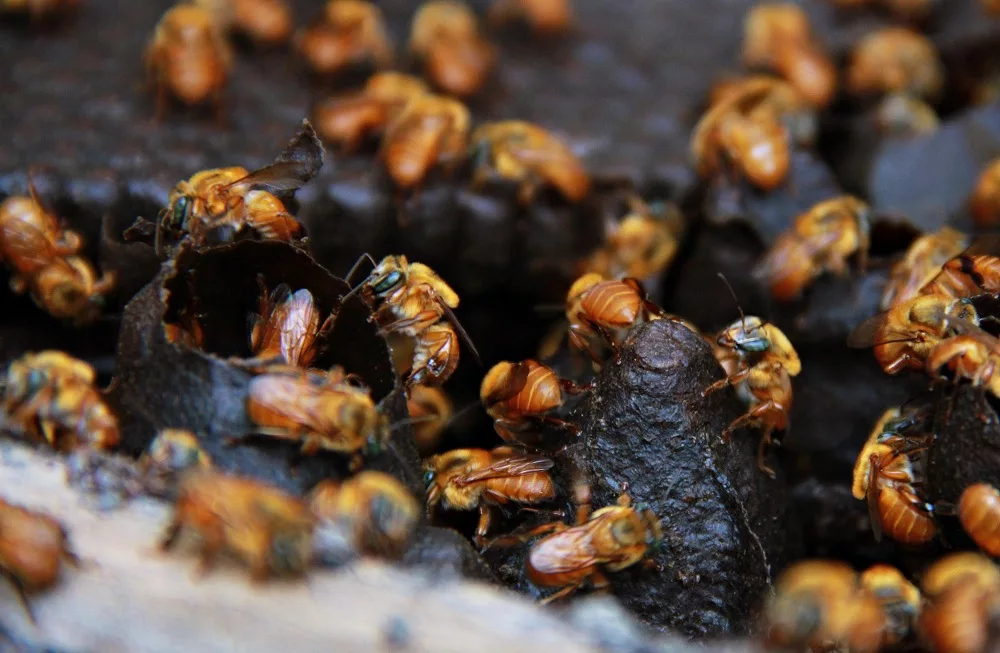
The Embrapa Genetic Resources and Biotechnology is developing researches to prevent Uruçu Amarela bee extinction. The insect can produce up to 5 kilos of honey per colony per year and is highly important for the ecosystem.
In this way, bees can pollinate immense natural and agricultural areas and generate income for small producers and family farmers, with more added value.
Its honey is one of the tastiest honey produced by native bees. The species is among those with the highest productive capacity and has no stinger.
The team involved in the research wants to detect the degree of risk of that bee’s disappearance in order to establish a sustainable management plan that allows its conservation.
The research includes, among other studies, genomic and genetic analyzes of insect populations, especially in the Brazilian Cerrado.
The risk to this species lies in deforestation, unsustainable usage of chemicals and exploitation of hives, which can lead to death entire colonies.
Typical bee
According to the beekeeper and president of the Association of Beekeepers of the Federal District (AMe-DF), Anselmo Carvalho, the activity still does not have a federal law, which leads to legal uncertainty for breeders.
“For natural populations, the crossing of hybrid queens can cause, over time, less genetic diversity of natural populations”, explains Embrapa researcher Débora Pires, coordinator of the project.
The study has covered small properties to make creators aware of the importance of research, in addition to taking the topic to schools.


![24 Dec. 2023- Shirqat – Iraq – Ahmed Turki Naif, One of the beneficiaries of the training courses on modern agricultural methods in Shirqat is married and a father of two daughters, benefited from the project by adopting pivot sprinklers and drip farming after benefiting from the training course. his fealed work is growing barley, […] 24 Dec. 2023- Shirqat – Iraq – Ahmed Turki Naif, One of the beneficiaries of the training courses on modern agricultural methods in Shirqat is married and a father of two daughters, benefited from the project by adopting pivot sprinklers and drip farming after benefiting from the training course. his fealed work is growing barley, […]](https://planetacampo.canalrural.com.br/wp-content/uploads/sites/9/2025/02/undp_iq_dsc06266-scaled-1.webp)



